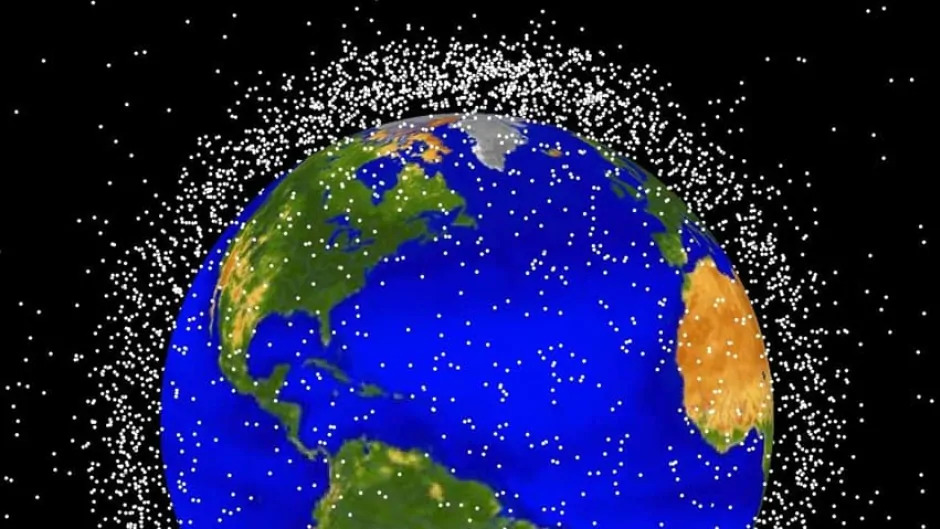Thousands of space debris are orbiting our planet. Space junk is a huge problem and is only getting bigger.
When we look up at the sky, we presumably believe that much of the volume of the universe is empty. Space often seems quite empty and free to us. But it becomes important for us to understand that we’ve left a lot of junk up there in the space. We believe that the universe is infinite, but that’s not true. Space has its limits! Although we don’t see space junk in the sky, but it does exist.
Sputnik 1 was the first satellite successfully launched into Earth’s atmosphere in 1957 by the USSR. It was the first-ever experience of humankind when something was sent into space from earth. It’s been around 63 years now and we have seen the launch of countless satellites in the universe by the end of 2020. The revolutionary journey of mankind began in 1957 and since then, thousands of satellites have been launched into the earth’s orbit.
With so much traffic travelling into space, it is no wonder if a little trash has been left behind. Some of the trash floats in space, while much of it orbits Earth. Man-made objects remaining in space that no longer serve any useful purpose are referred to as space trash and space junk, while some people call these objects: Space debris.
What is space junk?
Although we are unable to see space trash present in the orbit, it is believed that these space trash or space debris enter in low Earth orbit i.e., LEO. LEO is an orbital space junk yard. There are millions of pieces of space junk flying in LEO. Most orbital debris comprise human-generated objects, such as pieces of spacecraft, tiny flecks of paint from a spacecraft, parts of rockets, satellites that are no longer working, nuts, bolts, and other assorted items that have been broken off from the space missions.
To simply understand space junk, or space debris is any piece of debris or machinery left by humans in space. Some human-made junk has been left on the moon, too.
Most “space trash” is moving very fast and can reach speeds of 18,000 miles per hour, almost seven times faster than a bullet. Due to the rate of speed and volume of debris in LEO, current and future space-based services, explorations, and operations pose a safety risk to people and property in space and on Earth.
Amount of space junk present
In a recently published study, it is highlighted that the weight of human-made objects is likely to exceed the weight of all living things by the end of the year 2020. By the conclusions of this study, it can be rightly said that humans might just be the largest trash producer, not just on planet earth but in the entire universe.
There are more than 2,000 active satellites orbiting the earth at the moment. While there are also more than 3,000 dead satellites littering space. More than 5,00,000 pieces of debris or space junk are tracked as they orbit the earth.
There are many reasons why LEO has developed into an orbital graveyard. For instance, the deliberate destruction of the Chinese Fengyun-1C spacecraft in 2007 and the accidental collision of an American and a Russian spacecraft in 2009 alone have increased the large orbital debris population in LEO by approximately 70 percent, posing greater collision risks for spacecraft operating in low Earth orbit. There are no international laws present that could help in cleaning up the trash present in our LEO. Also, this process of cleaning LEO can be highly expensive as there are close to 6,000 tons of materials present in our low Earth orbit.
Why space junk is a big problem?
It is believed that even a small piece of debris present in the orbit around the Earth can cause huge damage. The increasing amount of space debris orbiting the earth could lead to catastrophic collisions in orbit. The simplest reason behind such a threat of collisions is speed. Because of the high speeds at which objects move in Earth’s orbit, even little pieces of space debris can cause damage.
These space debris moving at a very high speed in the orbit possess a great threat to other space-based operations and satellites. There are many accidents in the past that were caused due to the presence of space debris.
In 2009 the defunct Russian Cosmos 2251 military communications satellite collided with the functioning Motorola Iridium 33, destroying both satellites. In 2013 a Russian laser-ranging satellite, BLITS, had to abandon its mission because of an unexpected change in its orbit. This was all because of the presence of space debris in the orbit that these missions were left unsuccessful.
Is it possible to clean space junk?
Many space agencies and space companies are now taking responsible steps to clean up the space junk. These space organisations are now trying to de-orbit the satellites when the mission is to get over. These also include removing dead satellites from orbit and dragging them back into the atmosphere, where they will burn up.
Many nations including the United States, India, China, Germany, and Canada have rules concerning getting rid of old satellites and rockets, but everything depends on whether the satellite and rocket were designed for disposal or not.

